The Invisible Forest Under The Sea
Half of the planet’s oxygen comes from tiny plant-like organisms under the ocean’s surface.
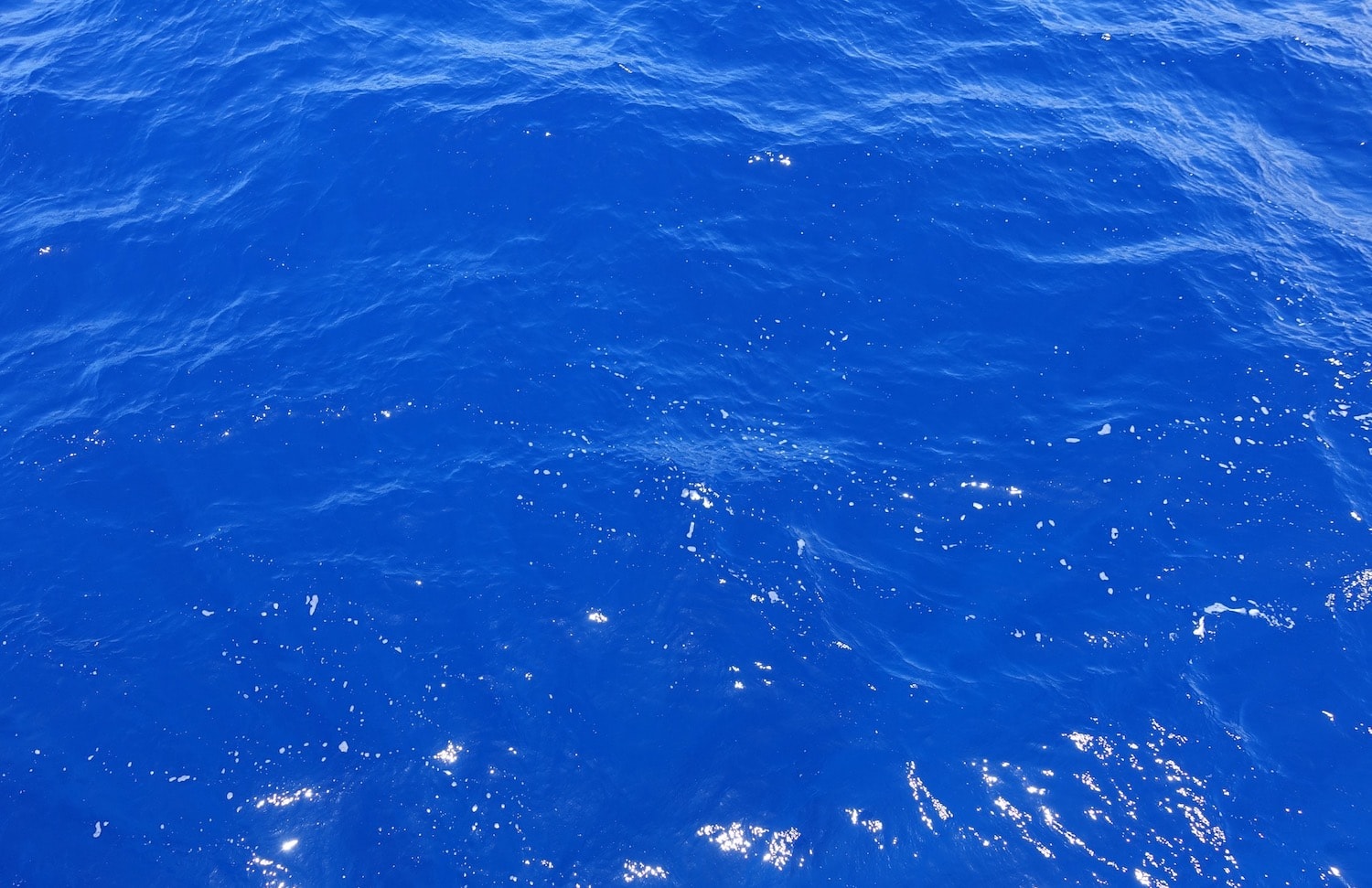
Out on the open ocean, you're surrounded by a vista that is a shocking shade of bright blue, explains Anne Thompson, a biological oceanographer. Credit: Allison Lee
The surface waters of the open ocean just about 100 miles north of Hawaii can be an unforgiving place for life. The seemingly endless stretch of electric blue water can be like a desert—zapped of the nitrogen, phosphorus, iron, and other essential nutrients needed to support the growth of larger organisms.
“When we go out there, if you look around, all you see is blue water, and it’s really hard to imagine that there’s anything in there,” says Anne Thompson, a biological oceanographer and research assistant professor at Portland State University who coasted out on several expeditions between 2016 and 2017. But she knows down 200 meters deep, in that harsh environment, there’s actually a team of organisms hard at work—tiny microorganisms that produce the oxygen that fills your lungs every five or so breaths.
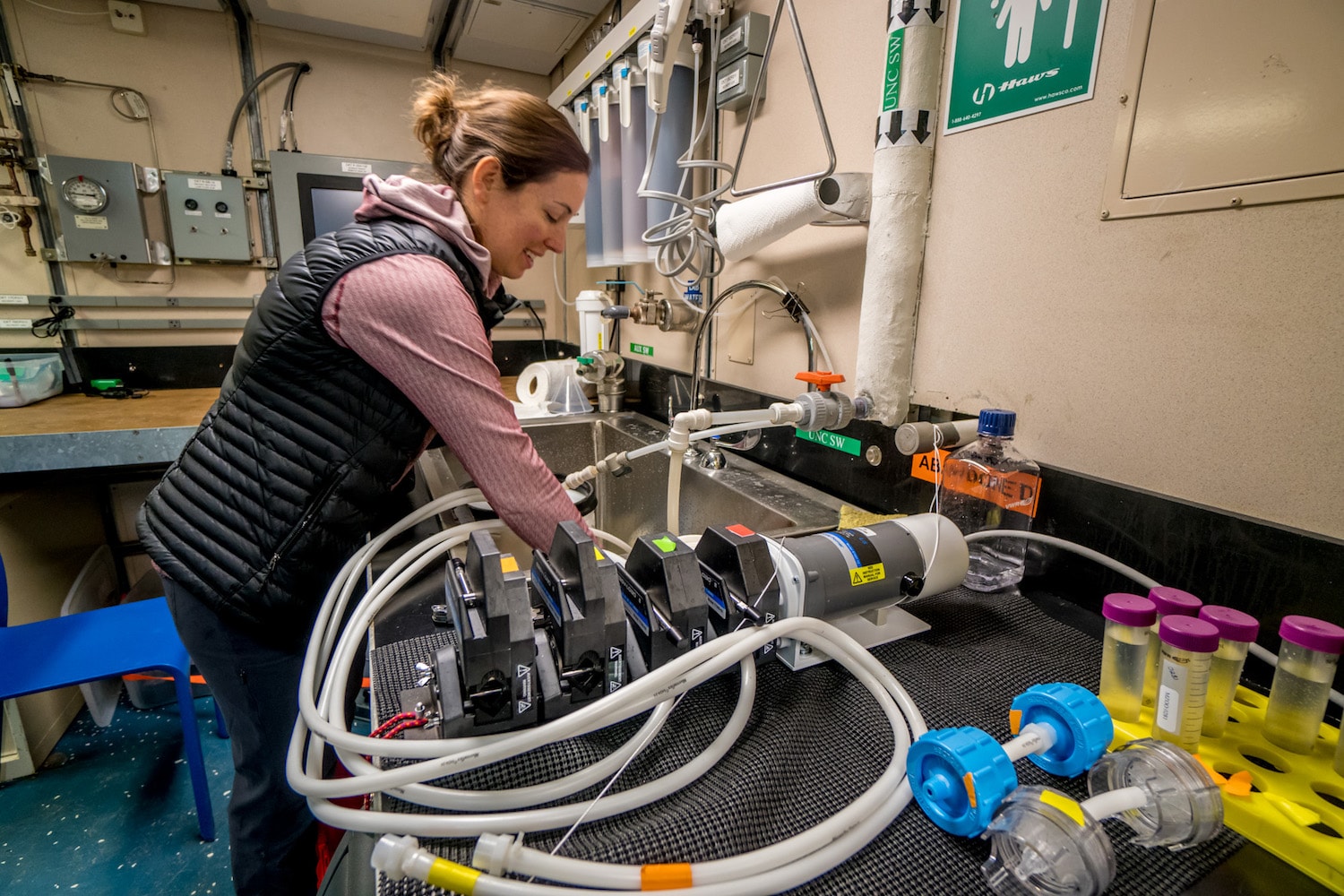
Thompson studies the billions of tiny plant-like organisms that make up the ocean’s “invisible forest”—a considerably thin layer of ocean filled with microscopic photosynthesizers called phytoplankton that suck up carbon dioxide from the atmosphere and bubble out 50 percent of the planet’s oxygen. Like a terrestrial forest, energy transfers between the sun, the plants, the animals and organisms, and so on. The phytoplankton are found floating in the top layers of the ocean above about 200 meters, or as far as sunlight can filter down. Not only do they help drive the cycling of carbon and produce a significant bulk of the world’s oxygen, phytoplankton also serve as a buffet of nutrients—the foundation of the food web feeding larger creatures in the sea. And like terrestrial forests, the invisible forest’s phytoplankton is made up of many species of photosynthetic microorganisms, from larger bodied silica-covered diatoms to the tiniest cyanobacteria.
“This is what’s happening in the open ocean—but instead of trees, we have these single-celled photosynthetic organisms that you just can’t see if you look,” Thompson says. The forest of photosynthetic microorganisms in the open ocean remains unseen to the naked eye, but like any ecosystem, “it’s beautiful, it’s huge, and it’s really wild,” she says.
Researchers used to think phytoplankton couldn’t be found in large numbers in the open ocean of the tropics and subtropics, where large systems of circulating currents, or ocean gyres, form pockets of the nutrient poor water. Then in 1979, scientists at Woods Hole Oceanographic Institution discovered the tiny cyanobacteria Synechococcus that would unlock a new piece to the invisible forest.
“It was like discovering grass on land when all you had seen before was trees and bushes,” says Sallie (Penny) Chisholm, ecologist and marine biologist at Massachusetts Institute of Technology who has been studying marine microorganisms since the 1970s. This pasture of primitive photosynthetic cells was underlying bigger cells, spreading across the nutrient poor regions in large numbers, she explains.
Synechococcus was just the beginning. Less than a decade later, while studying Synechococcus, Chisholm and a colleague happened upon an even tinier (only 0.6 micrometer) cousin called Prochlorococcus—a picoplankton that has become the a prized model organism of the research community in the three decades since its discovery.
“They’re tiny, but they’re powerful.”
Together, Prochlorococcus and Synechococcus fill an important role in the invisible forest, says Chisholm, but Prochlorococcus has taken on a legacy of its own within the microbe world. Over the years Prochlorococcus has received much attention and enthusiasm from the research community. (Chisholm and fellow researchers threw a ProchlorococcusFest on its 20th anniversary in 2008.)
Lisa Moore and Penny Chisholm celebrate the 20th anniversary of the discovery of Prochlorococcus with a song sung to the tune of “La Cucaracha.” Originally written by Jim and Shelley Tripp, 2/23/2008.
The vibrant green picoplankton is the smallest, most numerically abundant photosynthesizing cell known on the planet—of the half of the oxygen emitted from the invisible forest, the estimated 3 billion billion billion Prochlorococcus cells churn out 10 percent of the total. Packed inside these tiny cyanobacteria are stories about the invisible forest.
“I think of them as little reporters,” says Chisholm. And these little reporters are hardy organisms.
“They’re tiny, but they’re powerful,” says Anne Thompson, who was first introduced to Prochlorococcus as a graduate student in Chisholm’s lab and continues to study them at Portland State University. “They have pretty small genomes, but they’re adapted to this seemingly extreme environment. They’re out there seemingly passively floating around in the ocean, but just working hard and doing this incredible work for the planet.”
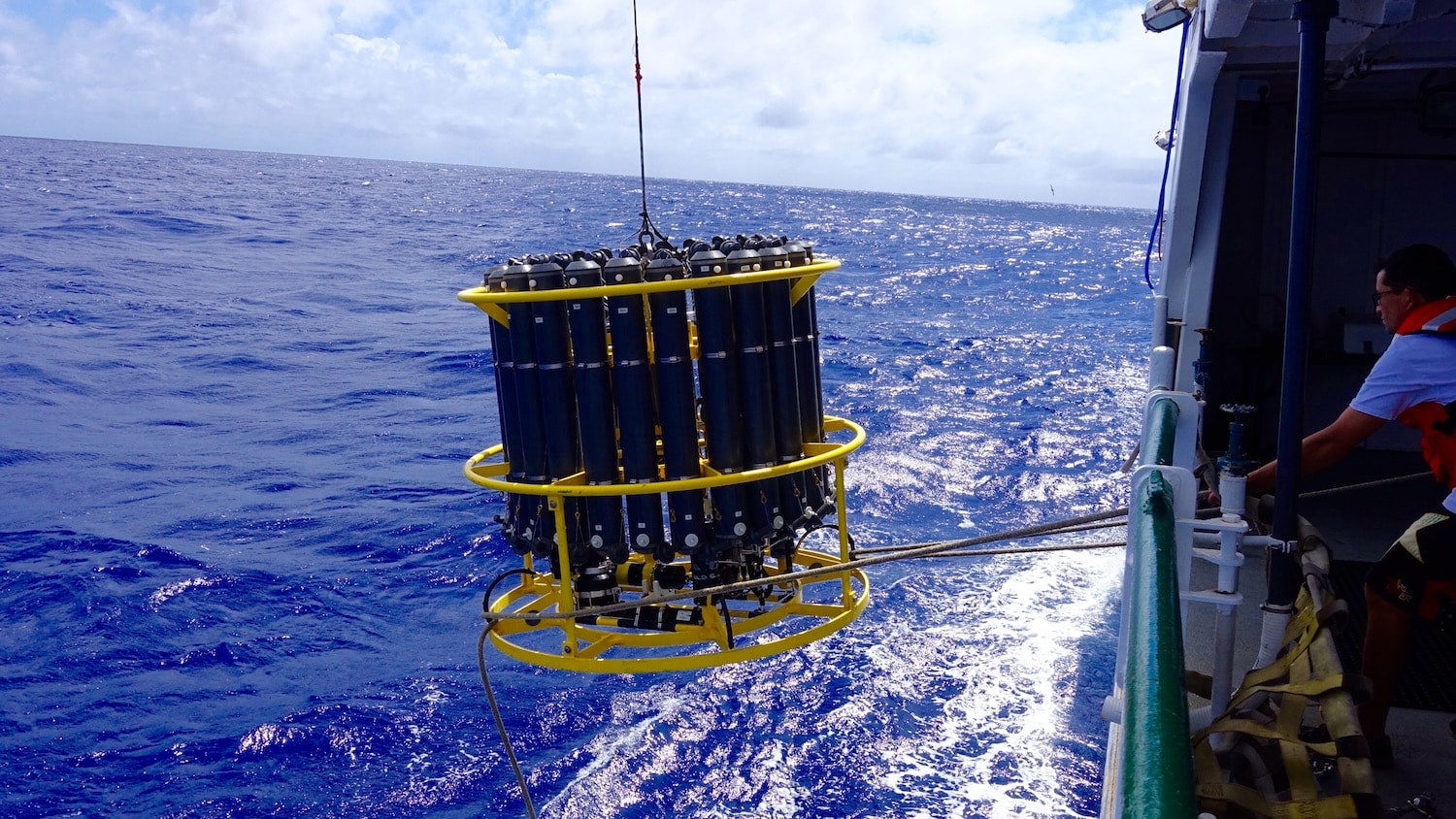
The Conductivity, Temperature, Depth (CTD) Rosette is the large piece of equipment the research team uses to collect samples. It is capable of handling depths of thousands of meters into the ocean. Credit: Allison Lee
Back in Hawaii, Thompson and her team jet out into open waters, in search of Prochlorococcus. A day’s cruise a hundred miles or so out from the Station ALOHA puts Thompson and her team in the middle of the North Pacific subtropical gyre—a habitat that’s a close representative to a large portion of the open ocean.
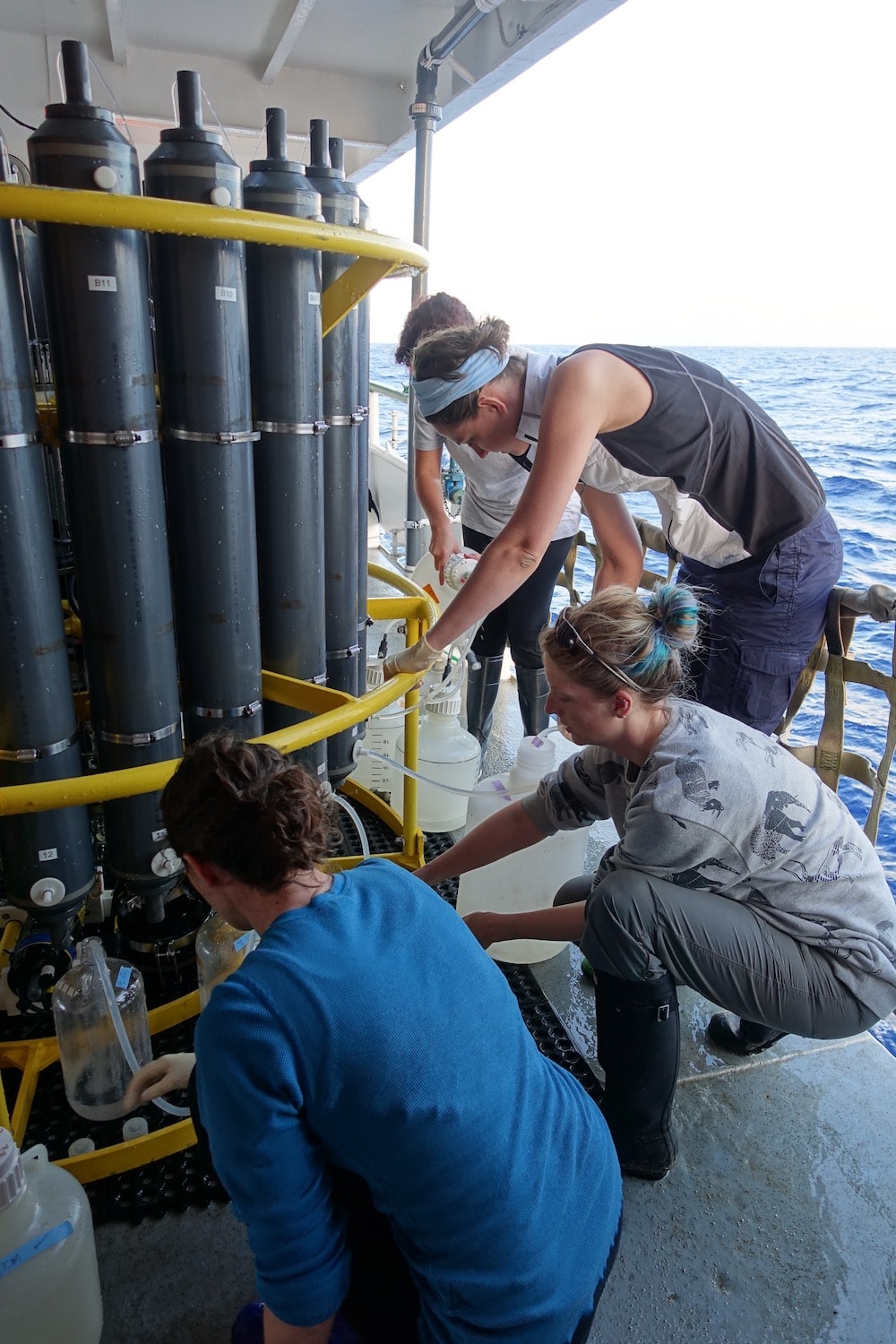
To get a better picture of what Prochlorococus is like in their natural environment, researchers have to make that journey out to sea to collect samples for the lab. Prochlorococcus predominantly thrive out in the open ocean at lower latitudes.
Prochlorococcus may be tiny, but it takes rather large machinery to obtain samples of the microscopic organism. Thompson and her team use a bulky device that consists of a rotunda of bottles and instruments latched together and hung on the ship’s rig. They dip it into the ocean and sink it lower and lower until it’s swallowed by the jewel-like blue waves. Thompson’s target is at depths around 200 meters where the prized Prochlorococcus dwell. Then, they retrieve the water, “which just looks like water out of your tap,” and spend days carefully filtering and taking small samples, Thompson explains. These little tubes are then frozen and transported back to the lab on dry ice. Only there, where the data analysis and DNA sequencing happens days or even months later, do the marine microbiologists know whether or not they have brought back valuable samples.
“Now that I’ve done this a lot of times, I know they’re there,” Thompson says. “But you don’t get that positive feedback until you get back home to work on them… so you’re sort of working under faith that these things are there.”
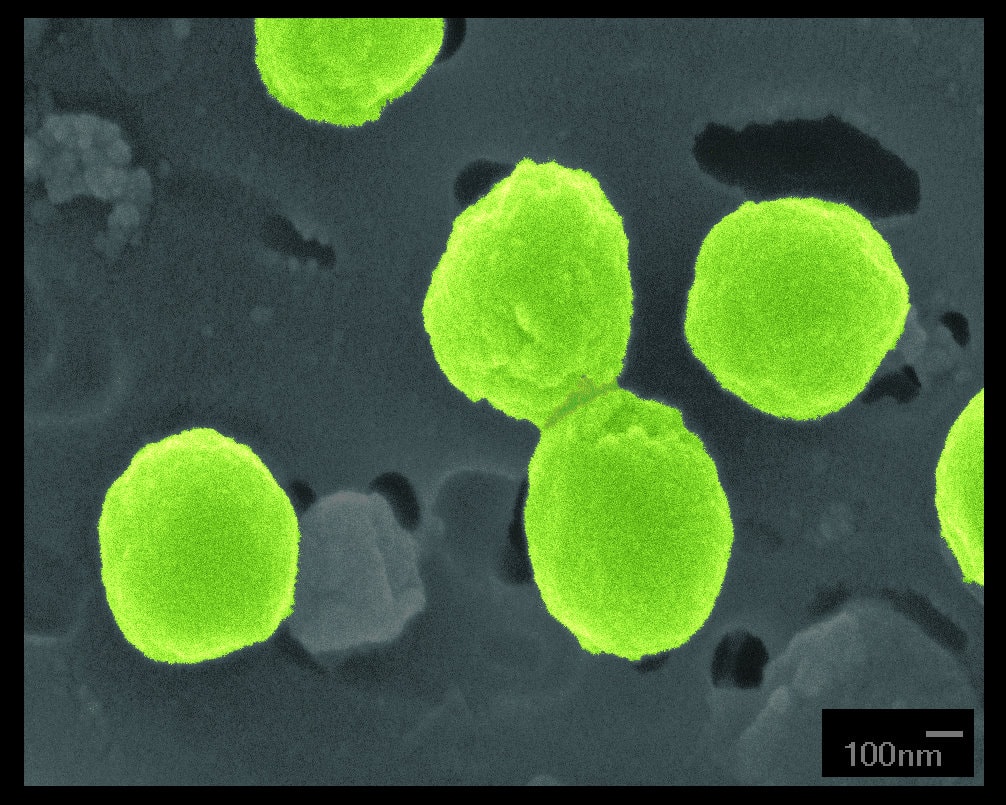
A pseudo-colored image of Prochlorococcus under the microscope. Credit: Anne Thompson/Chisholm Lab, MIT
In the lab, scientists can begin to study Prochlorococcus to unravel the complexities of ocean systems. And the tiny organism carries many clues, from its genome to its interactions with other microorganisms.
Prochlorococcus cells are invisible to the naked eye, but when grown in the lab in high numbers samples appear an incredible neon green. But the cyanobacteria is notoriously difficult to cultivate and isolate in the lab. Isolating Prochlorococcus from the other bacteria that might hitch a ride in the culture has been a persistent challenge, says Steven Biller, an assistant professor at Wellesley College and a former research scientist in Chisholm’s lab. Prochlorococcus doesn’t like to be alone, Biller says: “When Prochlorococcus is growing just by itself, it doesn’t grow as quickly, at as high of a density, and they’re much more susceptible to various kinds of stresses and perturbations in the lab,” he says. “So they actually really like having these other cells around.”
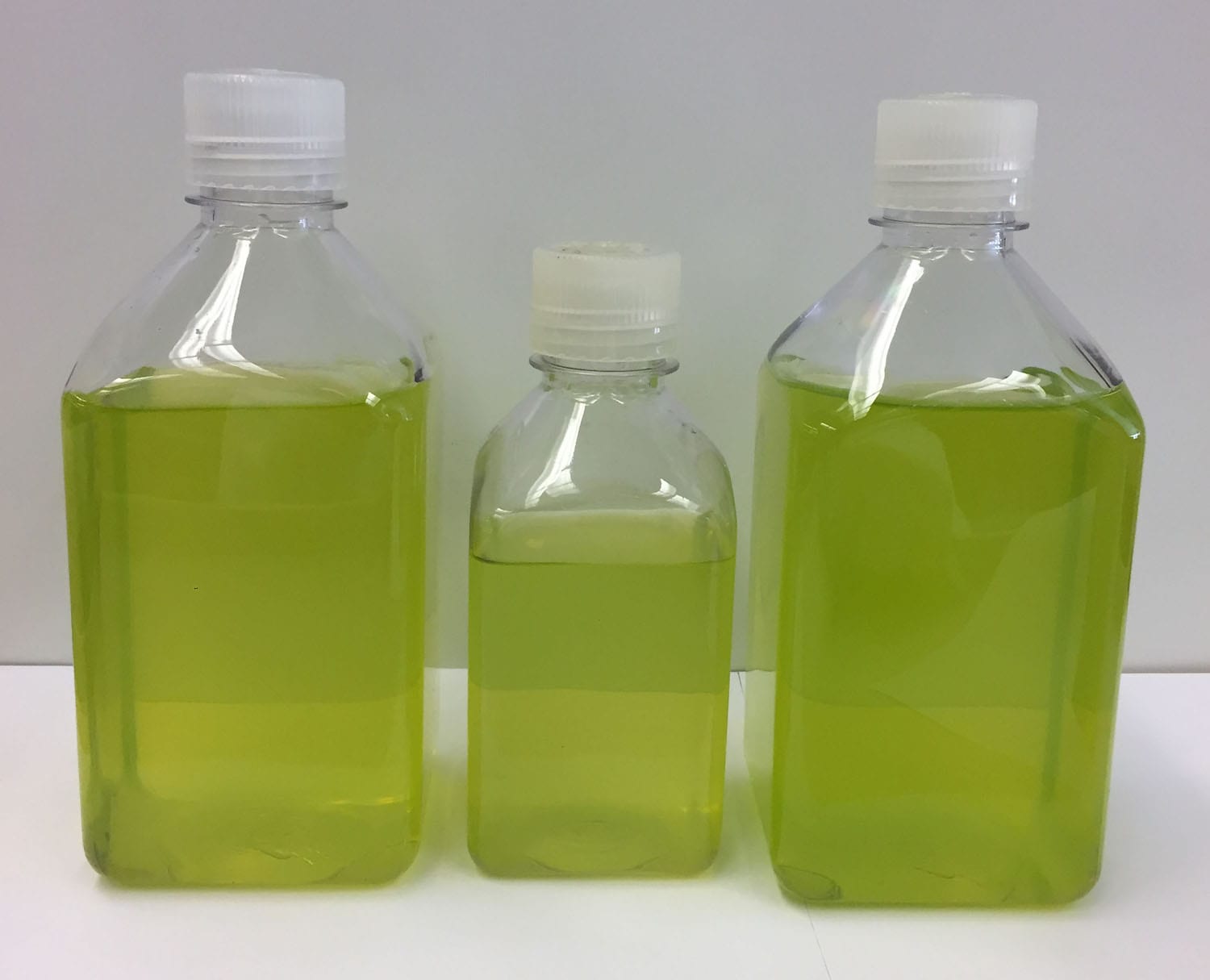
But this difficulty in cultivation tells researchers about the interplay between microorganisms within the community, Biller says. For instance, Biller found evidence that Prochlorococcus is responsible for moving and delivering all kinds of molecules (lipids, proteins, fragments of DNA) in the ocean by releasing extracellular vesicles. And it’s not just Prochlorococcus that creates these small membrane-bound packets. Seawater is actually a massive floating soup of microbial material exchange, according to Biller’s findings.
While researchers are still investigating the purposes for vesicle production, this network of exchange changes the way they’re thinking about how the ocean and its invisible forest functions.
“The vesicle study is one example where we’ve started figuring out Prochlorococcus, but now there’s lots of questions about all these different microbes that are releasing these structures in the ocean and what’s going on there in general,” says Biller.
Inferences can be extracted from the Prochlorococcus genome, too, he adds.
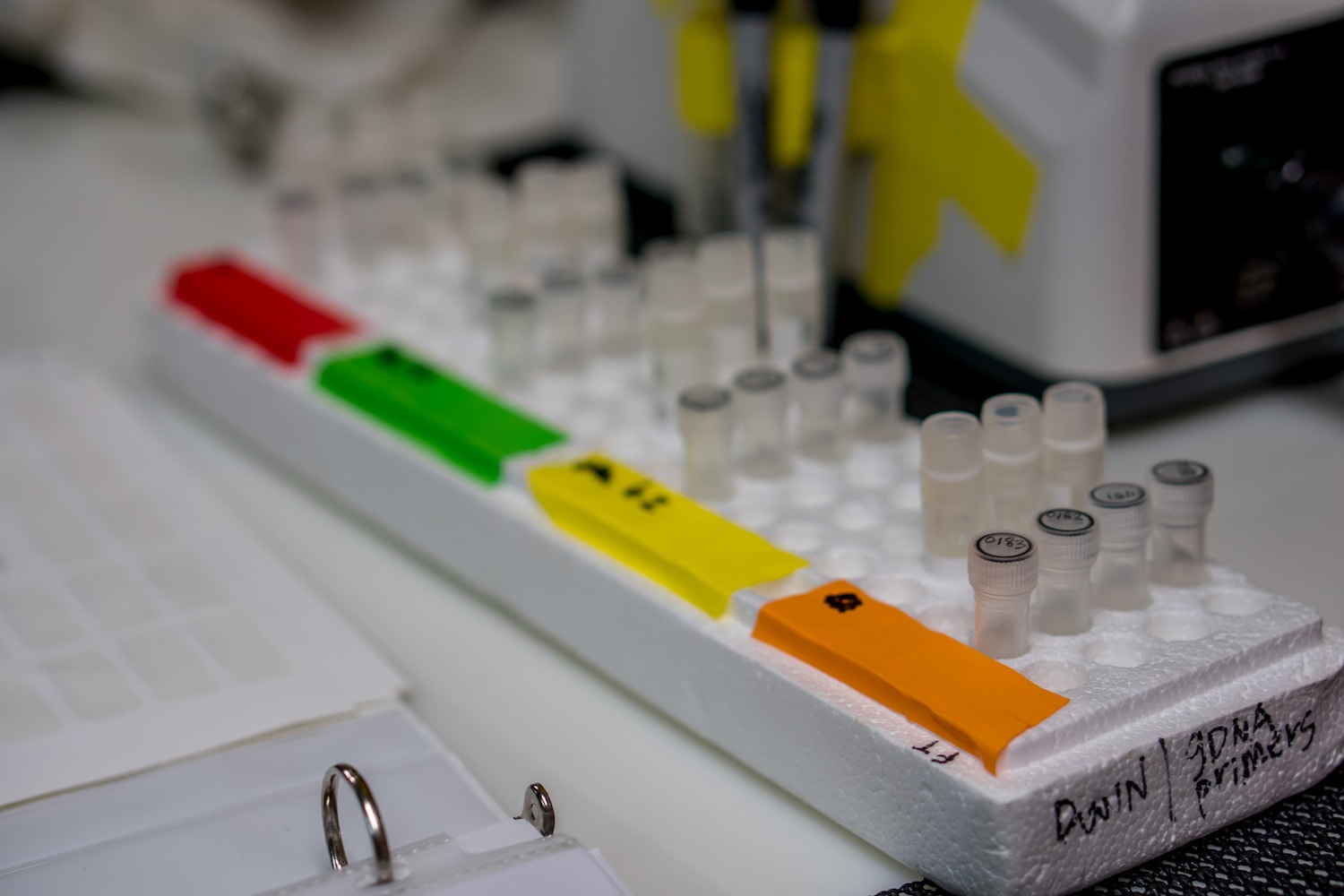
Every time researchers sequence a new Prochlorococcus genome, new genes are discovered, says Anne Thompson. Its small, streamlined genome—about 1,700 to 2,000 genes per cell—makes Prochlorococcus a model organism for researchers. While each cell contains about 2,000 genes, it draws from a diverse gene pool, or “pan-genome,” of a projected 80,000 genes. That’s four times the number that humans have. And every Prochlorococcus cell has a slightly different genetic makeup.
“The genomes of these cells have some areas that are conserved, or the same, between all cells and other areas that are variable—constantly changing and bringing slightly new capabilities to the cells and allowing them to respond to their environment and be effective competitors,” Thompson says.
This diversity is advantageous to adapting to changes and threats in the environment, which is especially helpful in the long run with events such as climate change. Already, researchers have witnessed different groups and types of Prochlorococcus naturally fluctuate in numbers to accommodate with the seasons. While they currently predict that Prochlorococcus populations would remain fairly stable in warmer and even more acidic waters, it is unknown how other consequences of climate change might affect them.
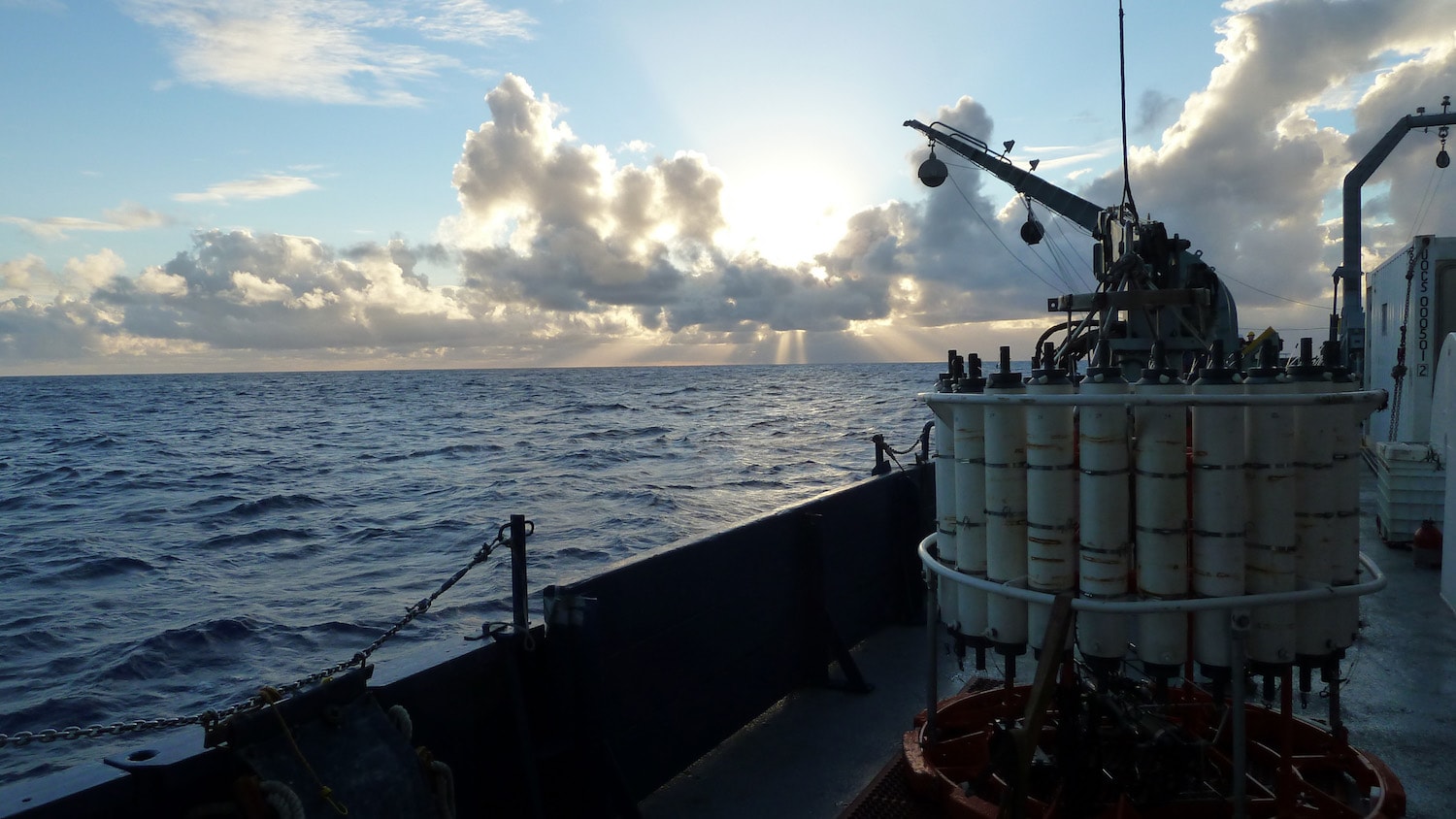
Researchers continue to collect more Prochlorococcus from oceans around the world to understand the invisible forest. From an expedition by Chisholm's lab in the South Pacific Subtropical Gyre, east of Isla de Pascua, Chile. Credit: Paul Berube
Changes in ocean temperature, shifts in nutrients, pollution, climate change all have the potential to thwart the balance of not just the Prochlorococcus ecosystem, but the entire phytoplankton community in the invisible forest, explains Thompson. The diverse microorganisms all perform different functions—from nitrogen-fixing cyanobacteria to many other types of carbon dioxide-sucking marine microorganisms.
Anne Thompson recites her poem “Dear Little Pro” at ProchlorococcusFest 2008, detailing her fascination for the picocyanobacteria and the difficulties in culturing it.
“All the changes in the ocean environment are going to shift the balances of these organisms [in the invisible forest],” Thompson says. “There’s a risk of change, and we don’t know what that change will be.”
The unknowns are what compel Thompson and fellow marine microbiologists to continue investigating the role of phytoplankton in the invisible forest. In school, you may have been taught that trees and plants create the oxygen you breathe, but the ocean also has a large role in that, says Thompson. The Earth and its inhabitants benefit from the cascade of interactions between species beneath the ocean. And it begins at the microbial level—within that invisible forest floating in the sea.
*Correction 8/16/2018: This article has been updated to correctly identify the Conductivity, Temperature, Depth (CTD) Rosette. Additionally, a previous version of this article incorrectly stated that diatoms fix nitrogen. We regret the errors.
**Correction 8/6/2021: This article was updated with a more specific definition of phytoplankton. Learn more about these marine microorganisms.
Lauren J. Young was Science Friday’s digital producer. When she’s not shelving books as a library assistant, she’s adding to her impressive Pez dispenser collection.